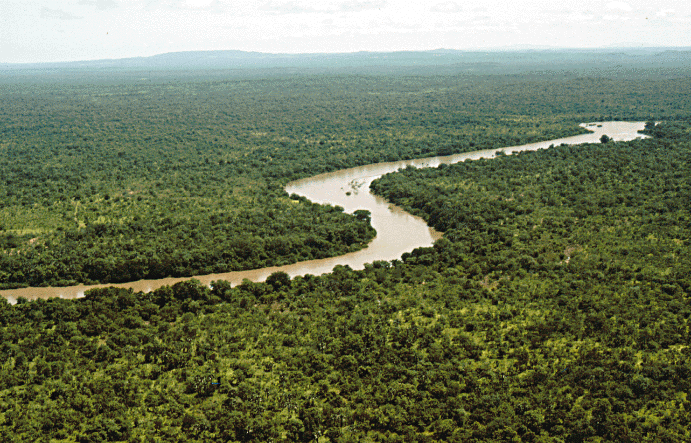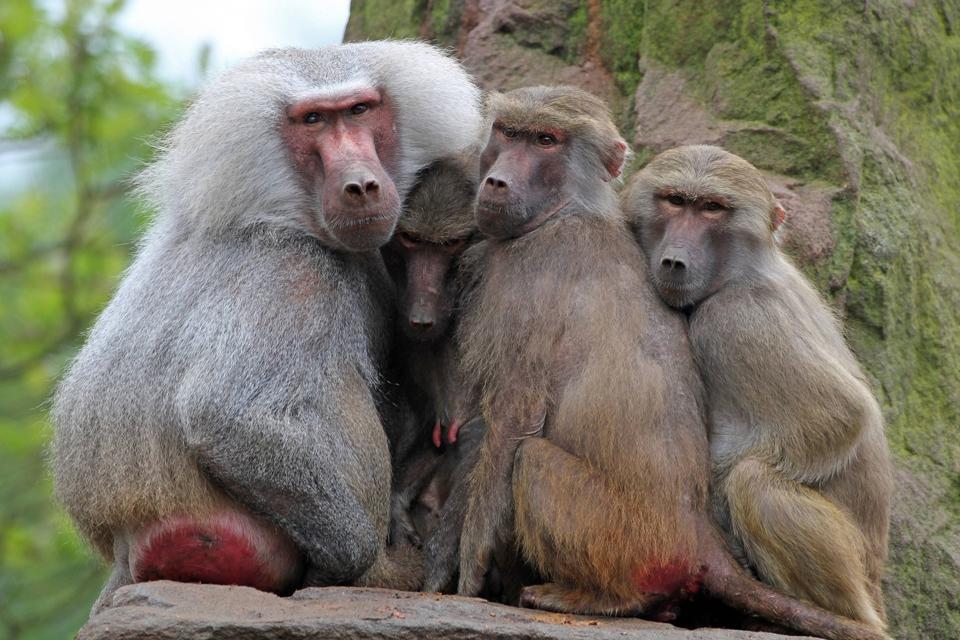The Gambia is situated on the western coast of Africa. It is almost an enclave of Senegal, being nearly completely bordered by it, save for a small strip of coast.[4] The country's main geographic feature is the Gambia river, a major river running over 1 100 kilometers, of which The Gambia occupies the downstream half.[5]
The climate of The Gambia is subtropical. They have a distinct hot and rainy season between June and October, as well as a cooler, dry season between November and May. The rainy season is marked at its beginning and end by high temperatures and humidity, and the dry season has dusty and dry trade winds* blowing from the Sahara desert.
Temperatures can range from 9°C at the beginning of the year and 43° in later months, making up a 34° temperature range.[4]
The physical terrain is mostly made up of the flood plain of the Gambia river as well as low hills. Due to the small size of The Gambia not very many physical features are present.[4]
There are a few different areas of vegetation in The Gambia, the uplands area is mostly savanna, a variety of swamps in the low-lying areas, and along the lower Gambia river is mostly mangrove swamp.[2]
Very few wild animals are native to The Gambia, and the few that are are in danger from human and domestic animal populations. A variety of monkeys, as well as some warthogs, baboons, antelope, crocodiles and pygmy hippopotamuses live in the middle and upper river areas. More than 500 species of birds live in the country as well.[2]
Climate
The climate of The Gambia is subtropical. They have a distinct hot and rainy season between June and October, as well as a cooler, dry season between November and May. The rainy season is marked at its beginning and end by high temperatures and humidity, and the dry season has dusty and dry trade winds* blowing from the Sahara desert.
Temperatures can range from 9°C at the beginning of the year and 43° in later months, making up a 34° temperature range.[4]
Physical Features
The physical terrain is mostly made up of the flood plain of the Gambia river as well as low hills. Due to the small size of The Gambia not very many physical features are present.[4]
Vegetation
There are a few different areas of vegetation in The Gambia, the uplands area is mostly savanna, a variety of swamps in the low-lying areas, and along the lower Gambia river is mostly mangrove swamp.[2]
Wildlife
Very few wild animals are native to The Gambia, and the few that are are in danger from human and domestic animal populations. A variety of monkeys, as well as some warthogs, baboons, antelope, crocodiles and pygmy hippopotamuses live in the middle and upper river areas. More than 500 species of birds live in the country as well.[2]

